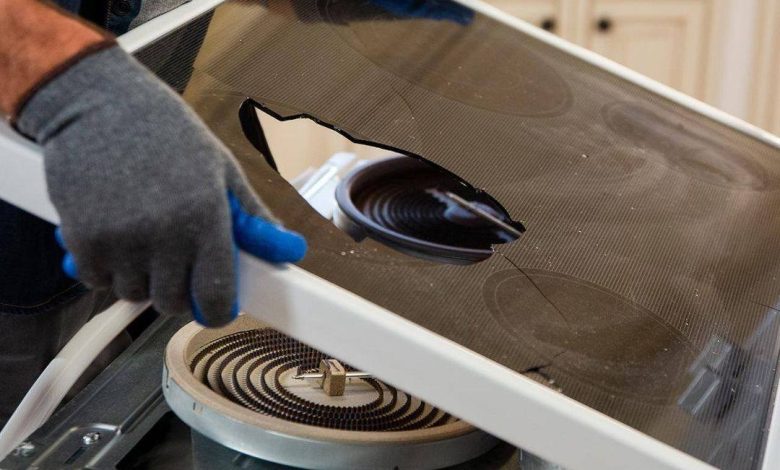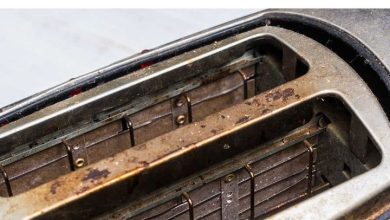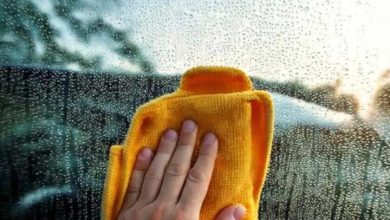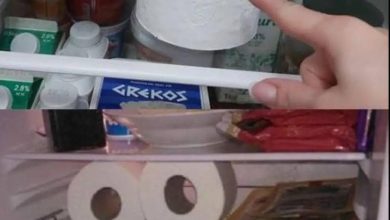9 Dangerous Glass Stovetop Habits You Should Never Make

Glass stovetops add a touch of modern elegance to any kitchen. Their smooth surface makes them easy to clean and undeniably stylish. But like any prized possession, they require a bit of TLC to maintain their beauty and functionality. Here’s a guide to some common pitfalls that can damage your glass stovetop, ensuring it continues to be the centerpiece of your culinary creations.
ADVERTISEMENT
1. Taming the Abrasive: Choosing the Right Cleaning Companions
ADVERTISEMENT
While scrubbing away stubborn stains might seem like the natural solution, harsh chemicals and abrasive cleaners are the kryptonite of glass stovetops. These aggressive cleaning agents can leave behind tiny scratches that dull the surface and make it more susceptible to future stains. Instead, opt for gentle, stovetop-specific cleaners or a solution of warm water and white vinegar. Microfiber cloths are your best friends here, as they effectively pick up dirt and grime without leaving behind lint or scratches.
ADVERTISEMENT
2. Size Matters: Selecting the Perfect Pots and Pans
Using the right cookware is crucial for protecting your glass stovetop. Avoid heavy pots and pans that can put undue stress on the surface, potentially causing cracks. Opt for lightweight, flat-bottomed cookware that distributes heat evenly and makes contact with the entire cooking element.
3. A Gentle Glide: Keeping Scratches at Bay
Sliding pots and pans across the glass can leave behind unsightly scratches. Instead, develop the habit of lifting cookware when moving it around. This small change will go a long way in preserving the smooth, pristine look of your stovetop.
4. Spills Happen: Addressing Messes Promptly
Accidents happen, and spills are a common occurrence in any kitchen. The key is to address them promptly. Leaving spills to sit and dry can not only be a cleaning nightmare later, but it can also lead to baked-on residue that’s difficult to remove and potentially damage the surface. Keep a damp cloth handy to wipe up spills as soon as they occur.
5. Cleanliness is Key: Maintaining Pristine Cookware
Food residue left on the bottom of your pots and pans can transfer to the stovetop during cooking, creating a sticky mess. Make sure your cookware is clean and free of debris before placing it on the burner. This will not only prevent unwanted marks on your stovetop but also ensure your food cooks evenly.
6. Finding the Right Resting Place: Avoiding Tempered Tantrums
While it might be tempting to place a hot potlid directly on the stovetop after cooking, it’s a recipe for disaster. Extreme temperature changes can cause the glass to crack. Instead, use a designated trivet or heat-resistant pot holder to safeguard your stovetop and prevent accidents.
7. Cracks Don’t Lie: Addressing Damage Promptly
Even the most cautious cooks might encounter a chip or crack on their stovetop. Ignoring these imperfections is a gamble. Small cracks can easily worsen with continued use, leading to a more extensive and expensive repair. If you notice any damage on your stovetop, it’s crucial to address it promptly. Consult a qualified appliance repair professional to assess the situation and recommend the best course of action.
8. Empty Doesn’t Equal Safe: Understanding Heating Limits
An empty pot or pan left on a hot burner is a surefire way to damage your glass stovetop. The intense heat can scorch the surface and potentially cause cracks. Always ensure there’s food or liquid in your cookware when it’s placed on a hot burner.
9. Consulting the Experts: Following Manufacturer Recommendations
Every glass stovetop is unique, and manufacturers often provide specific care and maintenance instructions in the user manual. Taking the time to read and understand these guidelines is crucial for maintaining your stovetop’s optimal performance and lifespan. Following the manufacturer’s recommendations will ensure you’re using your stovetop safely and effectively.
By following these simple tips and adopting a gentle touch, you can ensure your glass stovetop remains a beautiful and functional centerpiece in your kitchen for years to come.




